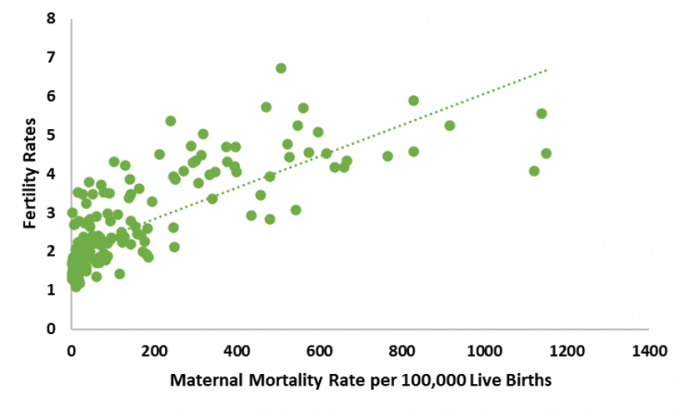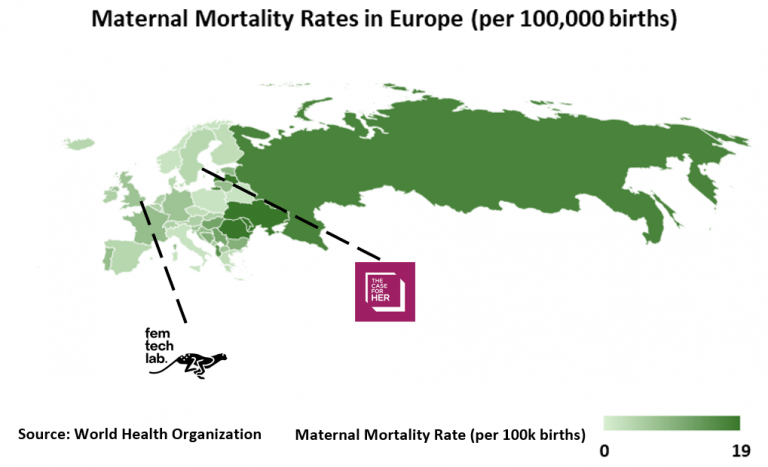“Good Health and Well-Being” in Europe
 Adam MacRae
Adam MacRae  April 13, 2022
April 13, 2022  Adam MacRae
Adam MacRae  April 13, 2022
April 13, 2022 This month’s edition examines the United Nations’ (UN) third Global Goal “Good Health and Well-Being” in Europe. Specifically, this briefing examines the first target of reducing global maternal mortality rates to below 70 deaths per 100,000 live births. At first glance, this topic would seem odd to investigate in Europe given that the continent already enjoys the lowest rates of maternal mortality in the world.
To that end, Holocene Impact Capital’s (HIC) argument is two-fold. First, the world would do well to learn why Europe currently enjoys the lowest rates in the world. Should the rest of the world achieve the same levels of care and success as their European counterparts, it would save the lives of nearly 300,000 women per year. Second, even within leading countries, there are significant gaps in outcomes due to economic inequalities, racism, and poorly designed institutions. In the United Kingdom, there is an on-going scandal following the investigation of the Shrewsbury and Telford Hospital Trust. Due to quotas to keep caesarean section rates below an arbitrary threshold, 12 mothers unnecessarily died while giving birth between 2000-2019. Scandals such as these demonstrate the danger of complacency.
Over the last two centuries, great strides have been taken to reduce maternal mortality rates through a combination of basic hygiene, an increase of births performed with trained staff, and economic development resulting in higher living standards. Using Finland as an example, it managed to reduce its maternal mortality ratio from 825 to 3 per 100,000 live births between 1800-2015.[1] This is no small accomplishment. If the world experienced the same levels of living standards of 1800, 1.26 million women would die from pregnancy every year.
Unfortunately, despite these gains there has been a reversal of fortunes with young women more likely to die today than their mothers a generation ago in over a dozen countries including Serbia.

As highlighted by the researchers at Our World in Data, when discussing maternal mortality, a major consideration is the distinction between the risks on a per-pregnancy basis as well as the risks to the woman over her lifetime. This is a major factor because as it stands, the richest economies enjoy both the lowest maternal mortality rates, but also some of the lowest birth rates as illustrated in Figure 1.
This is why one of the chief aims of the World Health Organization (WHO) is to reduce teenage pregnancy to hopefully reduce fertility rates over the course of a woman’s lifetime. The reduction of teenage pregnancy is especially important because in 2015 maternal health conditions were the leading cause of death for girls aged 15-19. The key takeaway is to understand that when focusing on maternal outcomes, it is important to remember that giving birth is not an isolated event, but a significant milestone in a woman’s life and part of a wider picture both in the years leading up to and after a birth.
As with all the most pressing issues, each challenge and the solutions to address them include many factors. Below is a series of 5 factors that (combined) could have enormous positive impacts for maternal outcomes. In the European context, it is safe to argue that the first 3 have been adopted at scale and responsible for the current outcomes for women, with the 5th potentially responsible for the disparities of scores across Europe. On a global level, it would be best to adopt a combination of the 5 with consideration to the local needs of the population.
Together, the payoff would be enormous, possibly saving the lives of nearly 300,000 women a year.

As highlighted above, so much work is necessary in the years before and after pregnancy. This is why when highlighting firms that are doing good work to address positive maternal outcomes, we decided to focus on two leaders in the FemTech industry at large. Loosely defined, the FemTech ecosystem includes tech-enabled companies developing consumer products and solutions with the goal of improving female-specific conditions and outcomes. In 2019, the FemTech ecosystem was valued at $18.78bn in 2019 and is expected to grow to $60bn by 2027.
These two companies are just a sample of the great work happening in this space and we at HIC will be keeping an eye on this in the months to come.
[1] On a global level, the world lowered its ratio between 1990-2015 from 385 to 216, a decline of 43.9%.